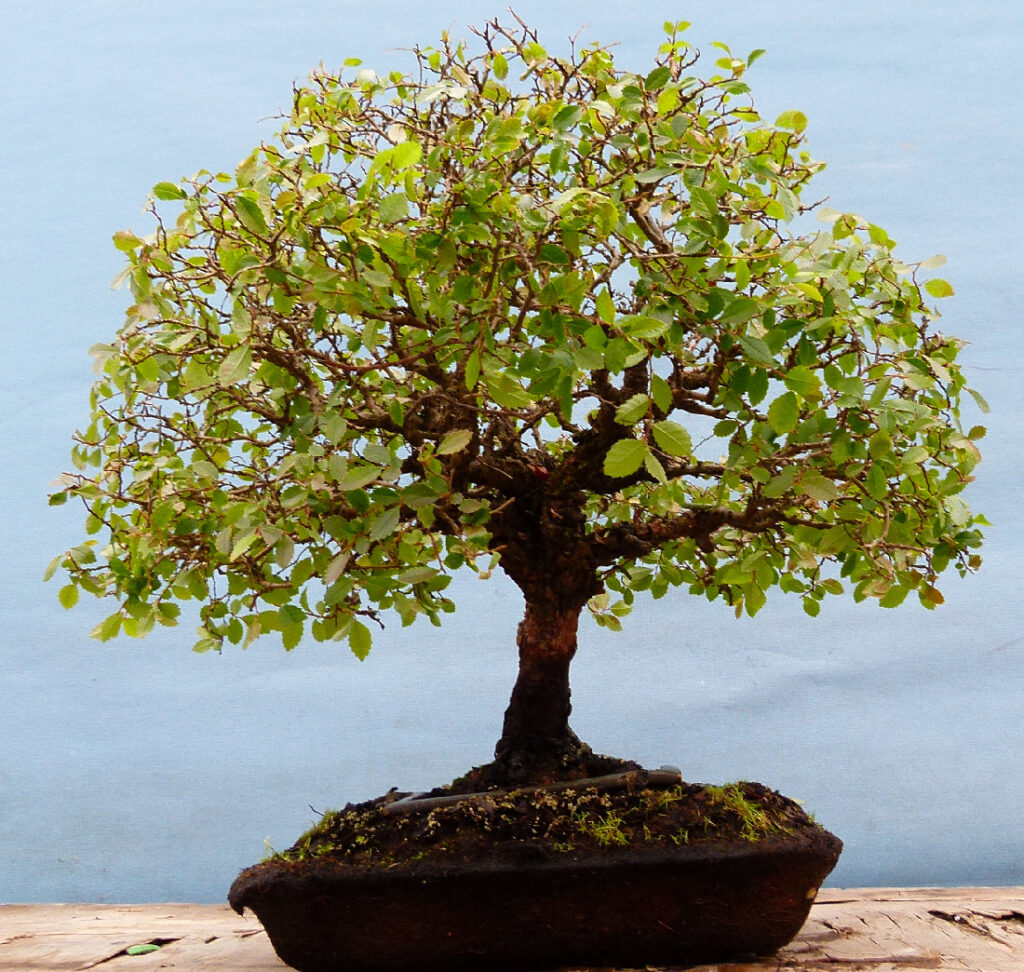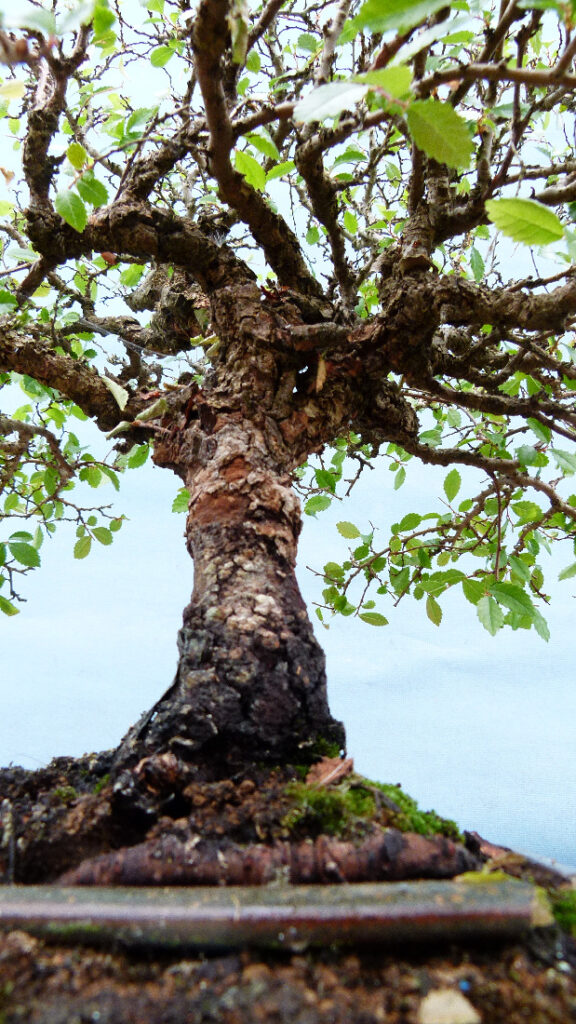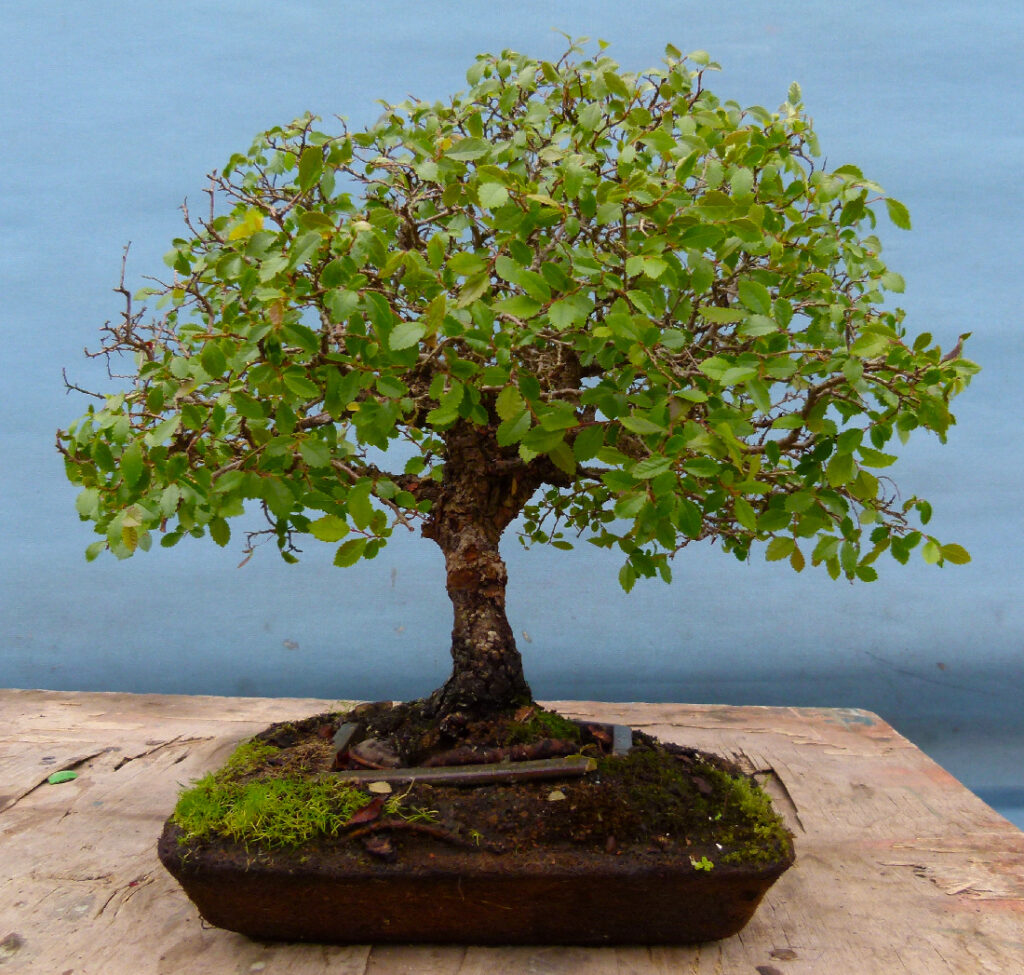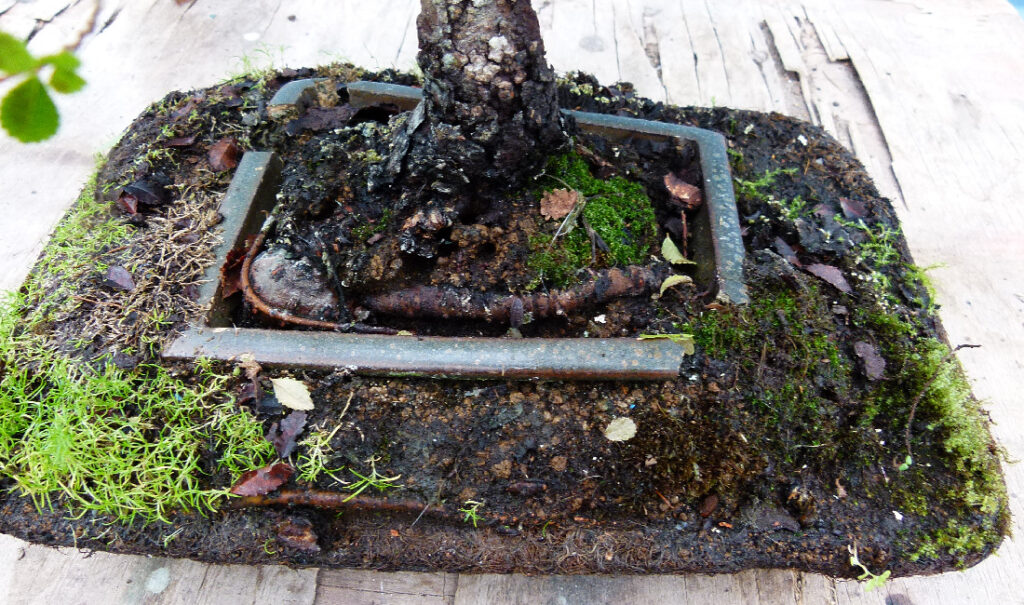Anyone who knows me or stops by here regularly will know I am a great fan of the oft maligned Chinese elm. Yesterday I cam across a ‘repotting technique’ though I would not recommend it.
In order to get the best from this ubiquitous variety it’s important to be involved. A good Chinese elm is a very intensive labour of love. They are definitely not a once a year brush up kind of deal. To get the best from an elm requires hitting certain marks each and every year, as with most bonsai, timing is important and everything we do affects what happens next. Getting the most from any bonsai is about maximising lots of little seemingly intangible and unrelated responses.
However yesterday something happened that made me question….
Just how much of the “bonsai” we do, do we actually need to do? How much of our activity and efforts are truly beneficial to the development of our trees and how much is more for OUR own gratification. Then taking it a step further, how much of what we are doing actually PREVENTS our trees developing into bonsai?
The answer to that little conundrum is obviously not straight forward. So much depends upon our experience and understanding and even more depends upon our definition of bonsai and what that actually is. Just giving a plant a passing resemblance to a natural tree in miniature with a bit of wire and pruning is not what I call bonsai these days, twenty five years ago that’s about all I had and felt pretty smug about it too. Looking back I was a cocky little t**t. A fact that was made plain by the arrival of a little tree in a carrier bag just a day ago that posed some difficult questions.
One of the great joys of being involved in bonsai is the discovery of special little trees that virtually nobody but their owners knew existed. These rarely turn out to be masterpieces of the art but they often show great age….and normally display what we might call neglect.
So, yesterday lunchtime a lovely lady turned up on my doorstep clutching a manky carrier bag. Apparently the trees pot had broken in the winter freeze and needed another, hence the visit. Without really looking I commandeered the bag and it’s contents with a promise to sort it out. It’s a little elm, how hard can it be?
So come evening time I had a chance to take a look and this is what I found…..

Bonsai Repotting Technique – Not Recommended!

Beautiful craggy old trunk. This only happens with time and age.

This in not how bonsai repotting should be done.

Bonsai repotting should not be this hard
Apparently the lady has owned the elm for more than thirty years. It has never been re-potted, just potted on when the old pot began to look a bit small and cracked. Now looking a bit sad, not growing very well and also missing a pot for months on end the owner thought it was best to seek some help when “As if by magic the shopkeeper appeared” or in this case a husky grumpy old git (me).
As soon as I put the whole soggy, smelly oozing mess on the workbench I was simply stunned by this apparently unremarkable yet infinitely magical little tree. This has sat in a corner, outside year after year, with almost no intervention or what we might call ‘care’ and now decades down the road just look!
The age and character evident in this determined little elm reminded me of what attracted me to bonsai in the first place, the absolute and unfathomable magic of trees and their fight for not just survival but prosperity.
This little fella has not been repotted, pruned or largely given any care for decades and on a certain level it’s absolutely beautiful and that just has to beg the questions above. However it’s now gone a bit far and so I have to figure out how to restore its vigour without killing it in the process. That’s always a difficult call with any plant that’s weak like this one is. Experience dictates getting it growing and improving its strength before getting involved in a proper repot. So some careful management of the rootball, judicious application of nutrients and a prune into secondary growth alongside a spell in my magic tunnel will see the decline gradually being reversed.
It’s my opinion that folk repot bonsai FAR too often and this proves the point. At some point the work needs doing but by working too often we can rob ourselves of a chance to see that special maturity that only time can create. Conversely we do need to know when to jump in before a significant decline happens as in this case. Most folk look at their soil to determine when to repot. In my experience it’s the tree that shows us when the time is right and the soil/drainage is of very little consequence so long as the skill to manage it properly is readily to hand.
Having been at this bonsai malarkey for so long now I figure I have seen most things but this repotting technique really is out there. I guess it goes to show, as I always like to say, language is important. Not everyone knows the difference between what we call repotting, what gardeners call repotting (actually potting on), slip potting and any of the other terms applied with gay abandon.
So, what’s to be done? This tree has massive roots growing out of the original pot (that’s now 100% wood inside) through the drainage holes and the cracks. I broke out as much as I could and packed the gaps with new soil. I have trimmed off the extreme bottom of the rootball and fluffed up the side. Afterwards I put the remaining, extensive root ball into a deep bonsai pot (at the owners request) that was completely buried. Lastly a hard cut back into secondary growth after removing all the dead stuff. That followed by a stint in a special corner of my greenhouse should see new buds pushing out in a couple of weeks time at which point I will begin introducing a little seaweed from time to time. Hopefully within 2 seasons it will be back to full strength at which time I can sort out the rootball properly.
These days I spend most of my time nursing sickly trees back to health (we buy a lot of collections). In our shitty UK climate this can take a lot longer than it might do but hey-ho!
My preferred course of action in this case is well explained here…
Related





Why didn’t you show a pic of it after the work you did?
I appreciate your unexpected viewpoint regarding this tree. I usually repot in order to assess the root development and, hopefully, redirect roots that need help. My most successful trees are in the ground, in a pot. the roots develop, and , hopefully so does the tree. I just lost a magnificent hinoki cypress last winter due to a “cycloinic bomb”, according to meteorologists. Temps in Alabama were below 20 degrees for several days. It didn’t accour me that my trees were in danger until too late. The learning curve in bonsai can be cruel.
Does a bonsai have to be In a flat pot or upright pot